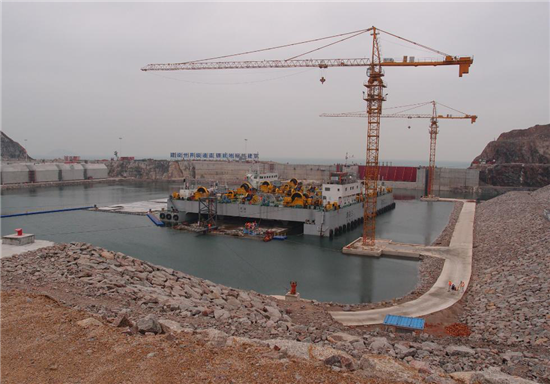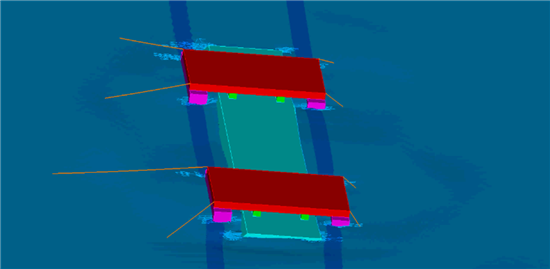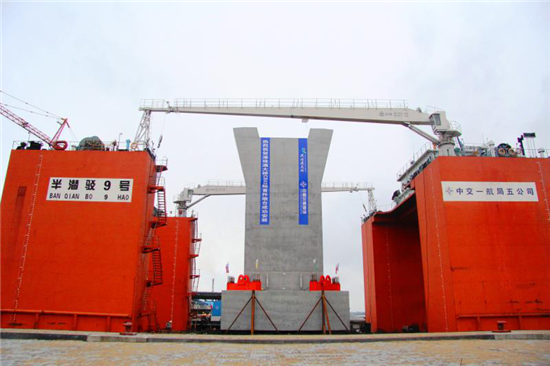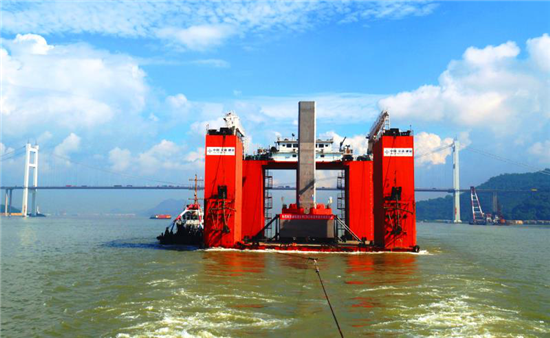Tianjin University contributes to Hong Kong-Zhuhai-Macao bridge mega project
At the starting point of the Maritime Silk Road, a "dragon" – the Hong Kong-Zhuhai-Macao Bridge (HZMB) -- stretches into the distance, dividing the ocean into two parts.
Reputed to be the eighth wonder for the 21st century, the HZMB officially opened on the morning of October 24th. The bridge links three areas, making it much more convenient to travel from one to another. Since opening, the three-hour drive between Hong Kong, Zhuhai and Macao has been shortened to 30 minutes.
The project involved more than 400 new patents, broke seven world records, and featured independently developed key techniques and design. After an 8-year struggle, the success of the HZMB fulfills the dream of several generations and amazes the whole world with its demonstration of flawless skills and high-level Chinese standards. The bridge is intended to be reliable for more than 120 years. From the Belt and Road Initiative to "Created in China", there is always a group of people providing strong technical support for each of the country's mega projects. From the beginning in December 2009 to the day of the official opening, a large number of Tianjin University's teachers and students participated in the design and construction of the HZMB, contributing the "Wisdom of TJU".
The main body of the HZMB consists of cross-sea bridges and one undersea tunnel, as well as artificial islands connecting them; they are all key to the whole project. Engineers faced daunting tasks with the design and construction of the bridge-tunnel section of the project as they had to take into account the transitions between above ground and undersea areas. The stability of the island wall under the influence of hydrostatic pressure and waves and the seepage analysis for the island pit were the main problems to be solved in the construction of the bridge-tunnel. CCCC-FHDI Engineering Co., Ltd was in charge of the design of the artificial island, adopting an embedded large steel cylindrical structure in building the island wall. This structure was a new type of coastal engineering structure for which China had not yet formulated norms. Entrusted by CCCC-FHDI Engineering Co., Ltd, the team led by Professor Wang Yuanzhan analyzed the stability and seepage in the artificial island pit, solved such technical problems as the weakening of the soft soil under the wave load and simulation of the failure process of the embedded steel large cylindrical structure. They also carried out calculations to analyze the stability and seepage under various load cases, providing technical support for the artificial island design.
 |
|
The photo of the installation ship and the immersed tubes for shipment after being connected to each other in the deep-water dock |
 |
|
The three-dimensional fine finite element simulation consisting of the installation ship, immersed tubes, cables and water system |
The undersea tunnel of the HZMB consists of 33 immersed tubes. The weight of each tube is nearly 80,000 tons, which is the same as the weight of a medium-sized aircraft carrier. Each tube cost nearly 100 million yuan. Having been prefabricated in the deep-water dock, the immersed tubes needed to be connected to the installation ship with cables, which then towed them to the construction site during the appropriate period with acceptable wave and load conditions. The safe floating and sinking of the immersed tubes was crucial to the construction of the whole project. In order to assist the design and construction unit in solving this problem, the engineering team launched a research project, "the numerical simulation of the floating of the sinking tube under the combined actions of wave and flow", under the charge of Associate Professor Xiao Zhong of the School of Civil Engineering of Tianjin University, establishing for the first time a 1:1 three-dimensional fine finite element simulation model consisting of the installation ship, immersed tubes, cables and water system. The viscidity and turbulent characteristics of the water and the coupling among the installation ship, immersed tubes, cables and the water had to be taken into consideration in the calculation model.
In order to make the simulation model better serve the project, the research team went to the engineering site to conduct on-site inspection of the final floating scheme of the immersed tubes, carried out numerical simulations for dangerous conditions. They offered instructions to ensure safety and provided guidance for safe construction during the floating and sinking process. The research results provide theoretical guidance for subsequent similar projects, and the economic benefits are sure to be remarkable.
 |
|
The prefabricated pier of the HZMB fixed to the semi-submerged barge |
 |
|
The prefabricated pier of the HZMB transported by the semi-submerged barge |
The parts for the piers of the HZMB were prefabricated separately on land and installed on water; the largest part weighed 3510 tons and was over 22m in height. The prefabricated piers were transported to the construction area by semi-submerged barge. The long towing distance, the complicated sea conditions, the tall and slender structure of the piers and the high center of gravity of the system led to a problem -- the semi-submerged barge and the pier joint moved under the influence of the wind and waves during the transport process, and the trolley wheels supporting the piers were subjected to heavy loads. To ensure the safety of the semi-submerged barge and bridge piers, a team led by Professor BieShe'an of the School of Civil Engineering of Tianjin University calculated the hydrodynamic properties of the whole system and analyzed the towing stability of the bridge piers. Based on those results, the team put forward a scheme of fixing the piers on the transport ship so as to ensure their safe transportation.
Many alumni of Tianjin University have contributed to the design and construction of the HZMB, They overcame a number of difficult problems and tasks -- solving the sinking of the immersed tubes and silting problems, pioneering multiple methods of rapid sinking of steel cylinders, successfully finishing the design of the Guishan Plant to prefabricate the immersed tubes of the HZMB, calculating the stability of the embedded large steel cylindrical structure by the Plaxis 3D software, and completing the task of designing the track on the fabrication yard for the immersed tube.


















